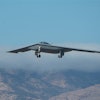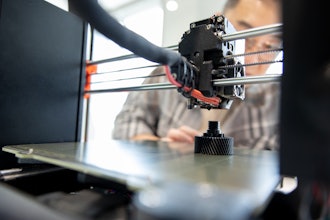Seattle (AP) – The head of Boeing Co.’s 787 program said Monday the company is confident it can lighten the hot-selling plane by 2.5 tons – enough to fulfill promises that it will be much more fuel efficient than any similar commercial jet flying today.
Engineers are looking at ways to trim weight from parts scattered throughout the entire plane, in some cases switching from aluminum to titanium, Mike Bair, general manager of the program, said in a quarterly conference call on the plane’s development.
“We know exactly where we have to go to take weight out of the airplane,” said Bair. “For the most part, it’s just optimizing the part design to be a little more weight-efficient than the first pass through the design yielded.”
Boeing Chief Executive Jim McNerney recently called the 787’s weight a “dogged issue” that would force the aerospace giant to boost research and development spending on the plane by $300 million this year and in 2007. That’s in addition to the roughly $335 million in extra R&D spending Boeing committed to the 787 in the second quarter of this year.
Boeing has estimated it needs to shed roughly 5,000 pounds from the 787. Once that happens, Bair said, the company will be able to meet the commitments it’s made to the 36 customers that have ordered the plane so far.
To date, Boeing has won 432 firm orders and 23 nonbinding commitments for the mid-sized 787, stretching its delivery schedule out to 2013.
Bair said the plane remains on track to take its first flight in August 2007 and enter airline service in May 2008.
Major assembly of the twin-engine airliner began in June with the wing center section, which is being built by Fuji Heavy Industries in Japan. Other manufacturers are making practice parts to verify that their production techniques are up to snuff.
“So far we’ve gotten nothing but good indications from all of them in terms of parts quality and their capability to produce the 787,” Bair said.
One of the 787’s major selling points has been that it will be more fuel efficient than similar airplanes flying today, in part because of a shift to composite materials that are lighter and more durable than aluminum.
Earlier this year, Boeing engineers found bubbles in the composite used for the fuselage, and judged it would likely fail an FAA test. The company decided to make two more fuselage sections at the same time, then test them concurrently to make sure they meet quality standards.
Despite the extra costs and time needed to conduct those tests, Boeing has said the glitch is not expected to delay the plane.
Bair said Boeing now believes that the 787’s composite structure, as well as simpler wiring and systems, will save airlines even more on maintenance than it had previously predicted.
Bair said airlines’ operating costs are expected to drop an additional 2 percent to 3 percent on top of the previous estimate that fuel efficiency and lower maintenance expense would make the 787’s operating costs 8 percent to 10 percent lower than those of the extended-range version of the 767-300.
The 787 has given Boeing a big advantage in the market for mid-sized, long-range aircraft.
In July, rival Airbus SAS was forced to launch a redesign of its planned A350, a midsize jet that would compete against both the 787 and the larger 777.
As of Sept. 30, Airbus had received 100 orders for the A350 – less than a quarter of Boeing’s order total for the 787.


















